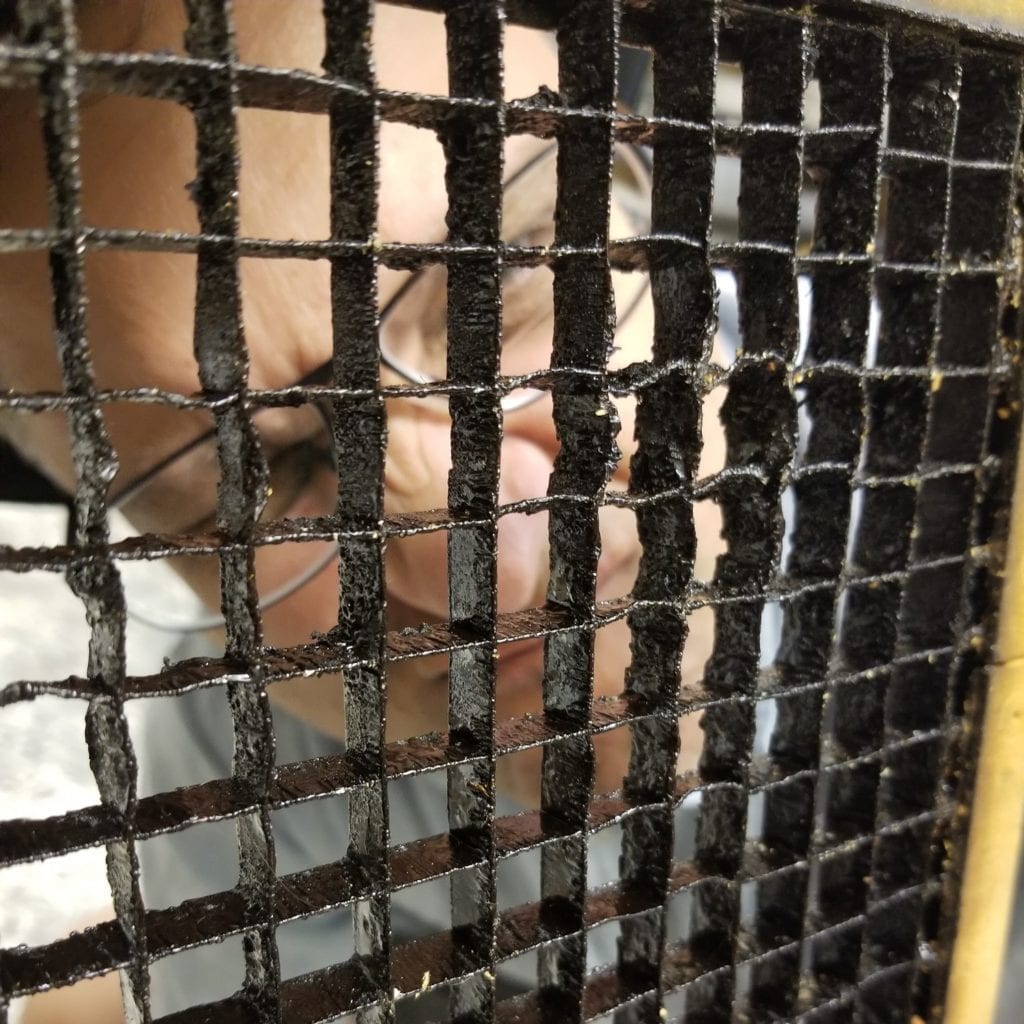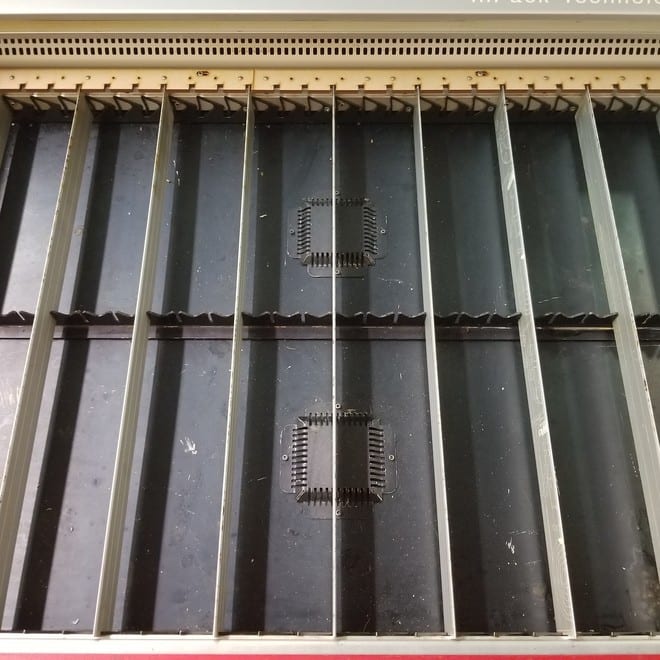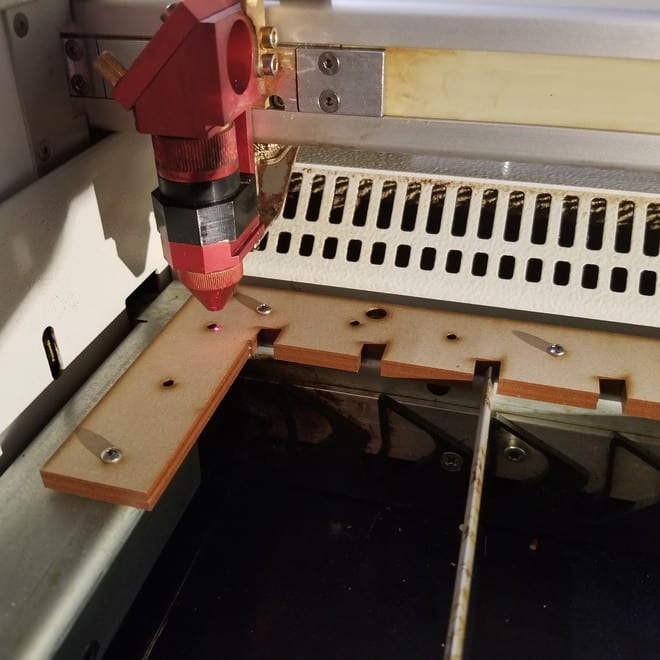We've been getting many requests for additional inventory of our popular Push Pogo Pins. Well, we've ordered a batch, and we'll post an update when they're finally in. Sorry, no better ETA than that!

Project: Switching Beds for a Better Cut
We laser lots of wood and acrylic... like seriously, it's hundreds if not thousands of sheets per year. This volume of throughput tends to cause the lasers to build up a lot of gunk and debris that needs to be cleaned on a regular basis. Besides being safer, it reduces the "flash" marks which are little black marks on the bottom of the material where the laser has burned through the material and reflected off the support table back to the underside of what was being cut.
Selecting the best surface used to support your lasered material comes down to a few options to which you need to ask:
- Is my project super heavy, or do I not care about table damage, scorching and just want a flat worksurface surface? (Use a flat metal tabletop)
- Are my parts small or risk being lost after being cut? (Use honeycomb)
- Do I want to minimize flash marks on my part? (Use slat)
- Am I doing the same thing over and over again and want best performance? (Use custom pin-table)
We've used all four methods at Solarbotics (five, if you include the rotary attachment for engraving ...pop bottles), with the honeycomb being the often used solution, but after our last laser cleanup, we've revisited the slat system.
Our latest designs are larger and better tabbed so they stay together. The slat system is ideal for these jobs, with its better managing of debris build-up, and vastly reduced flashing. Less support material below the cut means there's less to get in the way. For comparison, this is what a traditional honeycomb table looks like after a few months of cutting MDF (ug!). Look at that old and crufty thing... and the honeycomb too.

Now take a look at our new cleaned and re-slatted table! It's almost too clean...

As nice as it is, this bed of slats has no indexable edge for us to register our material against. Finding a common origin point on the bed crucial in production, so we used the laser to create our own registration edge!
Using the laser to laser parts for the laser... for better lasering...
Here are the results:

With this in place, we're ready for even higher quality laser cutting.
MORE POSTS
Update: Additional information from the Loveland Reporter Herald We've been big fans of Aleph Objects' 3D printers. They fit that sorta "Prosumer" niche. A bit better than kit-builds, not quite as expensive as the big professional units. We were disappointed we got the call a few months ago relating that Aleph was looking to shut […]
We just got the PDF documentation up for the SunSwinger, so you'll see it listed as a resource under the SunSwinger product info page. Hope you all enjoyed April Fool's. The Spazovore was only a partial joke - anybody who ordered one will be receiving one!
The new documentation for the new K CMD "Compact Motor Driver" kit and the Symet bundles has been uploaded. If you like to review BEAM documentation, go crazy!
Solarbotics, Ltd. is not responsible for misprints or errors on product prices or information. For more information, please see our Terms and Conditions.
Warning: This product contains chemicals known to the State of California to cause cancer and birth defects or other reproductive harm.
Please visit www.P65Warnings.ca.gov for more information. This item was manufactured prior to August 31, 2018.

